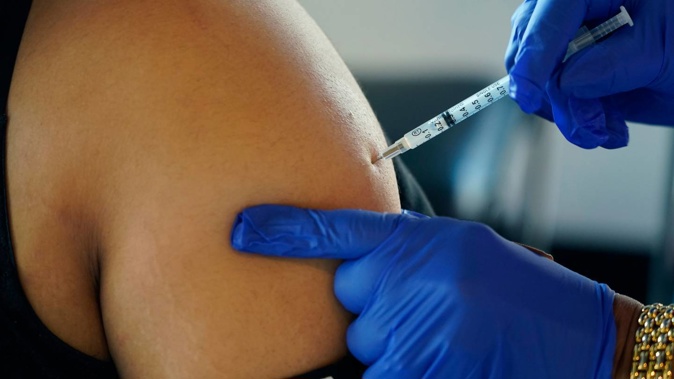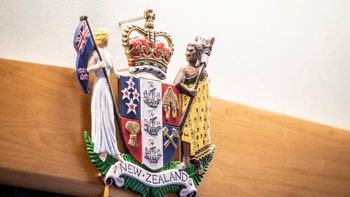
MedSafe today received an application from Pfizer for provisional approval of its latest Omicron-targeted vaccine. What does it do and when will it be available? Jamie Morton explains.
What's the new vaccine?
It's called a bivalent vaccine, designed to protect against the coronavirus as we first encountered it, but also against the Omicron forms causing the most Covid-19 infections in New Zealand now.
Because the updated vaccine carries two messenger RNA (mRNA) components of the virus, half of it targets the original strain, and the other half the BA.4 and BA.5 subvariants.
Otago University immunologist Associate Professor James Ussher said these specifically stimulated populations of antibody-producing B-cells that recognised each of the respective lineages.
MedSafe has also received an application for provisional approval of Pfizer's earlier bivalent vaccine, targeted at the original Omicron type BA.1, and has now completed its evaluation.
How long have these been around?
While relatively new to New Zealand – MedSafe's first application for one was received only last month – bivalent vaccines are already in place in many countries.
The UK approved bivalent vaccines for BA.1 in August – and they've also been cleared in Canada, Europe and Australia.
The US has led the charge on the upgraded BA.4 and BA.5 bivalent vaccines, with its Food and Drug Administration (FDA) approving Moderna and Pfizer boosters in late August.
- Omicron outbreak: BA.5 will soon be gone - what comes next?
- 'Struggling to hang on': School illness battle as winter Covid wave begins
- Covid-19 expert: 'It's a battle between us and the virus - and the virus is winning'
They're now available to all Americans free of charge to people over the ages of 6 (Moderna) and 5 (Pfizer).
How well do they work?
While there's still little available data on the new vaccine's real-world performance – given it's only recently been rolled out in populations – initial results are promising.
"We're still waiting for data on efficacy, but there is data that suggests there's a modest increase in neutralising antibody levels against the Omicron variants in particular," Ussher said.
This month, Pfizer shared data from a clinical trial that showed a substantial increase in the Omicron BA.4/BA.5 neutralising antibody response above pre-booster levels.
Early data also showed the new vaccine was well tolerated and had a similar safety profile to its original shot.
/cloudfront-ap-southeast-2.images.arcpublishing.com/nzme/XI253TEXKQKPPN6IR7BBZMX3QE.jpg) Pfizer's bivalent vaccines targeting Omicron subvariants - and shown being manufactured here - have already been rolled out widely in the US and elsewhere. Photo / Pfizer via AP
Pfizer's bivalent vaccines targeting Omicron subvariants - and shown being manufactured here - have already been rolled out widely in the US and elsewhere. Photo / Pfizer via AP
While there were some concerns over the FDA clearing the vaccine without first testing it in human clinical trials, regulators were able to take into account trial data from the similar BA.1 formulation, along with new trials in mice.
How do the bivalent vaccines compare with each other?
Ussher – who's part of a Kiwi alliance developing New Zealand-made Covid-19 candidates - said the BA.1 and BA.4/5 bivalent vaccines hadn't yet been compared head-to-head.
"But we know that the BA.1 bivalent doesn't provide as high levels of neutralising antibodies against the BA.4 and BA.5 subvariants," he said.
"Given that BA.1 has now virtually disappeared, we're now looking at descendants of BA.2, BA.4 and BA.5 - or the ones that are circulating globally today.
"While these vaccines have been turned out remarkably quickly, the virus continues to mutate."
Importantly, the original vaccine that most of our population has received was still holding up relatively well against severe disease and death – even among people who'd only received two doses.
That owed to immune memory, specifically T-cells and B-cells able to be activated to fight new infections, which had been shown to linger long after vaccination.
"Protection against infection may wane, but you still remain well protected against severe disease, which at the end of the day is the most important thing."
A recent Ministry of Health analysis showed a 62 per cent reduction of risk of death among those who'd received two or more doses – and there was evidence boosting lowered that danger even more.
When can Kiwis expect to access the new shots?
Not immediately.
A Ministry of Health spokesperson said MedSafe was awaiting more information from Pfizer on the BA.1 bivalent vaccine, while clinical data to support the BA.4/5 vaccine application wasn't expected until "later this year at the earliest".
"Medsafe is evaluating these applications under priority."
Provisional approval by MedSafe was also just the first step in the process: advice also had to be sought from our Covid-19 Vaccine Technical Advisory Group, followed by a recommendation for consideration by the director general of health.
After that, the relevant ministers would need to reach a decision to use them before they could be rolled out.
In the meantime, second boosters remained available for people aged over 50 and healthcare workers older than 30 – and recommended for high-risk groups including over 65s, Māori and Pacific people and severely immunocompromised people.
But uptake remained lacking: just over half of more than 700,000 over-65s had received that extra dose, along with only around two in 10 Kiwis aged between 50 and 64.
Take your Radio, Podcasts and Music with you









